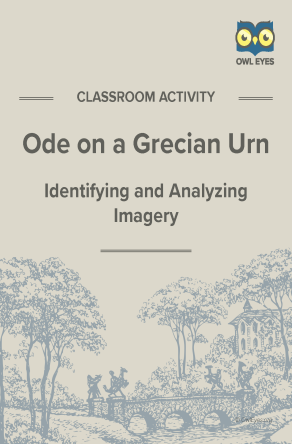Ode on a Grecian Urn Imagery Activity
- 8 pages
- Subject: Imagery, Literary Devices, Tone, Lesson Plans and Educational Resources
- Common Core Standards: RL.11-12.1, RL.11-12.4, RL.11-12.5, RL.9-10.1, RL.9-10.4
Additional Ode on a Grecian Urn Resources
Product Description
John Keats’s 1819 poem “Ode on a Grecian Urn” describes a Greek amphora in rich imagery, bringing to life the scenes and characters painted upon its ceramic surface. As the speaker engages with these scenes stanza by stanza, deeper motifs and themes emerge: the weight of history, the brevity of human life, the timelessness of love, the nature of Truth and Beauty. Keats’s poem, vivid and deep as it is, becomes an urn in its own right, inviting readers to return again and again to its painterly lines.
Skills: analysis, drawing inferences from text, close reading, identifying the relationship between words
About This Document
The Owl Eyes Imagery activity gives students an opportunity to practice identifying and analyzing imagery. Imagery within a text creates a sensory experience that can connect readers to a text’s setting, atmosphere, or overall aesthetic. Studying imagery will help students understand how narrators or principal characters feel. The main components of this worksheet include the following:
- A brief introduction to the text
- A handout on types of imagery with examples from classic texts
- A step-by-step guide to activity procedure
- Selected examples of imagery from the text
In completing this worksheet, students will learn to identify and analyze different kinds of imagery in order to develop close reading skills and identify the effect imagery has on their reading experience.







